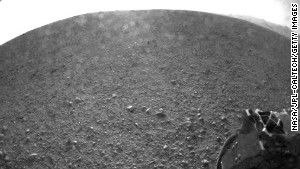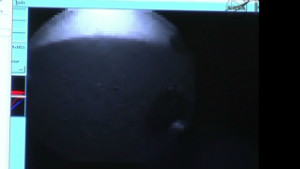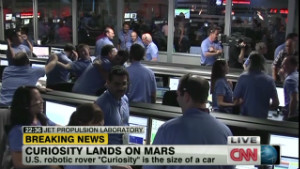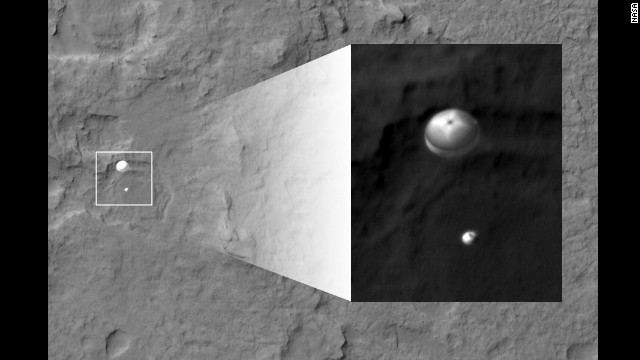Images of Mars landing show "exciting ride," NASA says
STORY HIGHLIGHTS
- The images cover the last two and a half minutes of descent
- The $2.6 billion Curiosity made its dramatic arrival on Martian terrain Monday
- "The image sequence received so far indicates Curiosity had, as expected, a very exciting ride," NASA says
Follow @CNNLightYears on Twitter for updates on Curiosity.
(CNN) -- Images beamed to Earth show NASA's rover Curiosity had an "exciting ride" when it landed on the Red Planet, the space agency said Tuesday.
NASA obtained some 297 color, low-resolution images sent to Earth from its rover that landed on Mars early Monday.
The images cover the last two and a half minutes of descent.
"The image sequence received so far indicates Curiosity had, as expected, a very exciting ride to the surface," NASA said in a press statement.




"As dramatic as they are, there is real other-world importance to obtaining them. These images will help the mission scientists interpret the rover's surroundings, the rover drivers in planning for future drives across the surface, as well as assist engineers in their design of forthcoming landing systems for Mars or other worlds."
The images shows some of the "gyrations" Curiosity did while it was connected to a parachute. The images, which can be viewed on NASA's website, also show Curiosity kicking up dust from the surface of Mars as it lands
The $2.6 billion Curiosity made its dramatic arrival on Martian terrain Monday in a spectacle popularly known as the "seven minutes of terror."
This jaw-dropping landing process, involving a sky crane and the world's largest supersonic parachute, allowed the spacecraft carrying Curiosity to target the landing area that scientists had meticulously chosen.
The spacecraft had been traveling away from Earth since November 26 on a journey of about 352 million miles (567 million kilometers), according to NASA.
Curiosity, which will be controlled from the Jet Propulsion Laboratory, has a full suite of sophisticated tools for exploring Mars. They include 17 cameras, a laser that can survey the composition of rocks from a distance and instruments that can analyze samples from soil or rocks.
The aim of its work is "to assess whether Mars ever had an environment able to support small life forms," NASA said.
Curiosity is supposed to last for two years on Mars, but it may operate longer -- after all, Spirit and Opportunity, which arrived on Mars in 2004, were each only supposed to last 90 Martian days. Spirit stopped communicating with NASA in 2010 after getting stuck in sand, and Opportunity is still going.
===========================================
 NASA's Curiosity rover and its parachute were spotted by NASA's Mars Reconnaissance Orbiter as Curiosity descended to the surface on Sunday. The rover landed early on August 6 (ET).
NASA's Curiosity rover and its parachute were spotted by NASA's Mars Reconnaissance Orbiter as Curiosity descended to the surface on Sunday. The rover landed early on August 6 (ET).
No comments:
Post a Comment